Vallinayagam Olaganathan Chidambaram Pillai, [VOC; வ.உ. சிதம்பரம் பிள்ளை] popularly known as Kappalottiya Tamilan [The Tamil Helmsman] and Sekkizuththa Semmal [scholarly gentry who suffered at the oil press], was an exceptionally talented organiser and an individual who believed in utilising all available avenues to rouse the people for nationalistic cause. V.O. Chidambaram Pillai (VOC) (with Subramaniya Siva) at Tuticorin (Thoothukudi) spear headed the Swadeshi movement in Tirunelveli district. And the rest is History!
கப்பலோட்டிய தமிழன்’s Autobiography
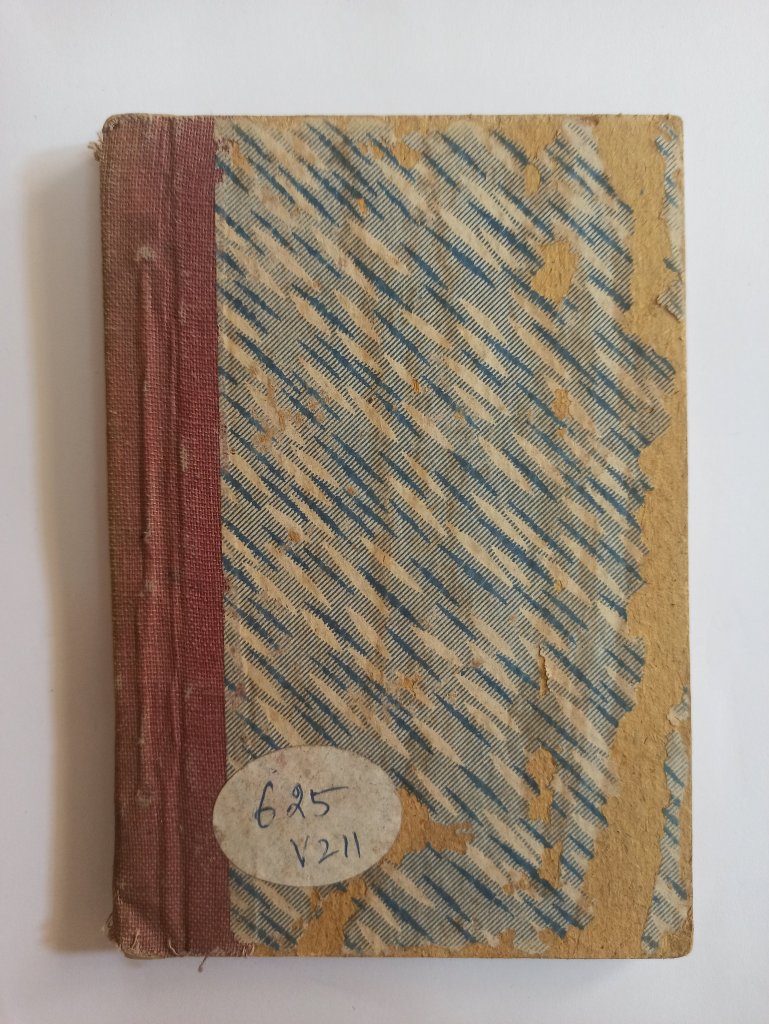
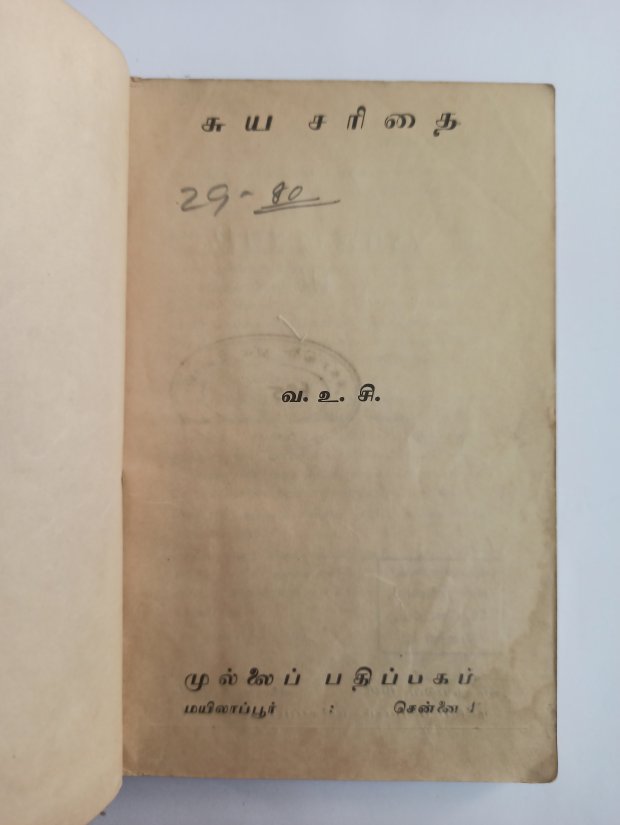
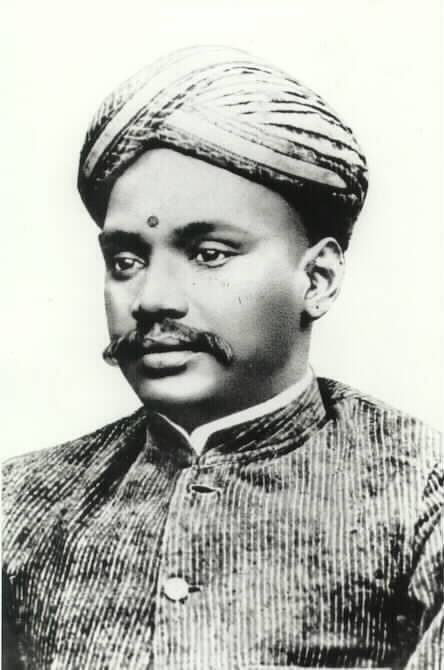
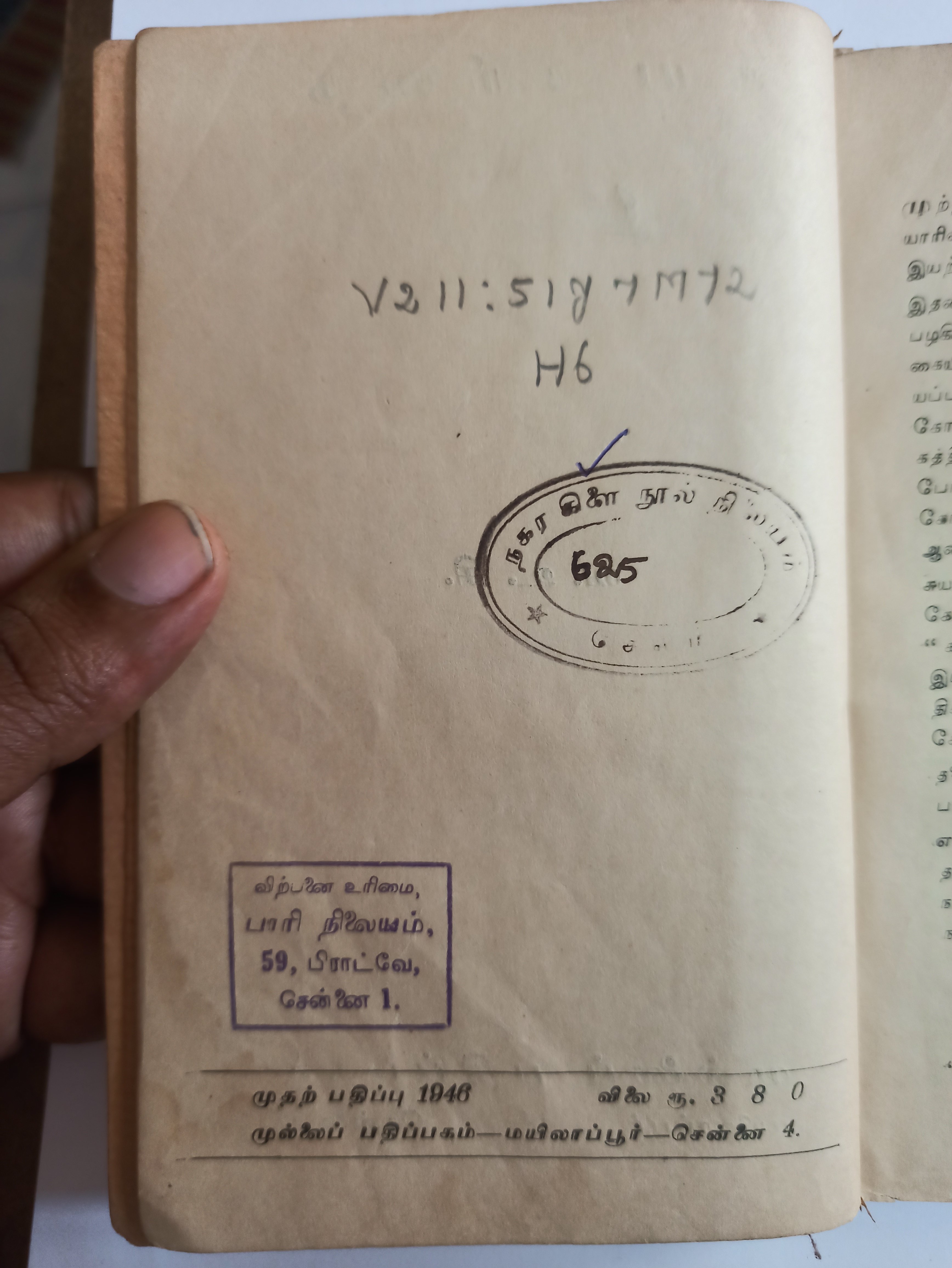
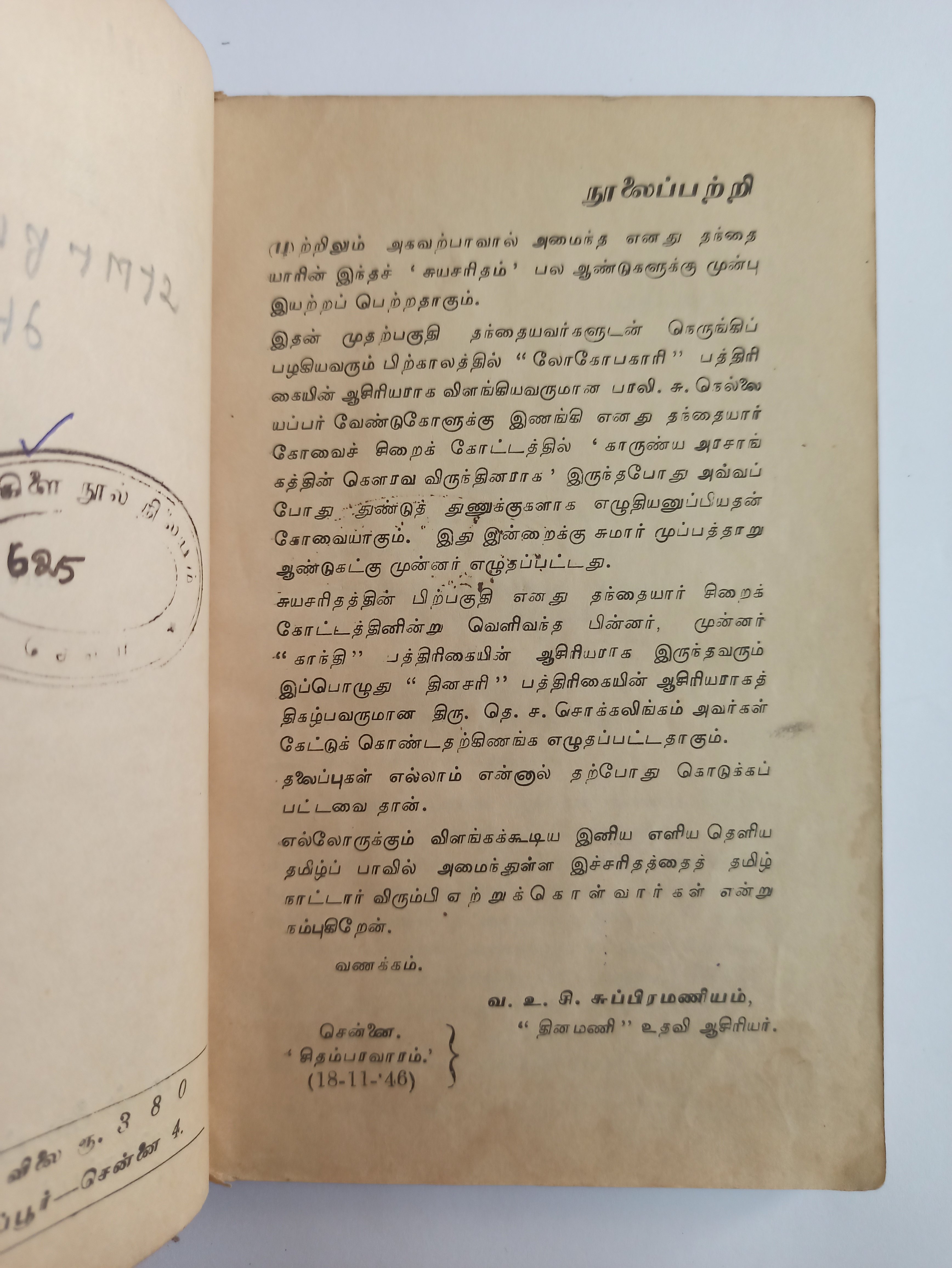
Publisher’s note
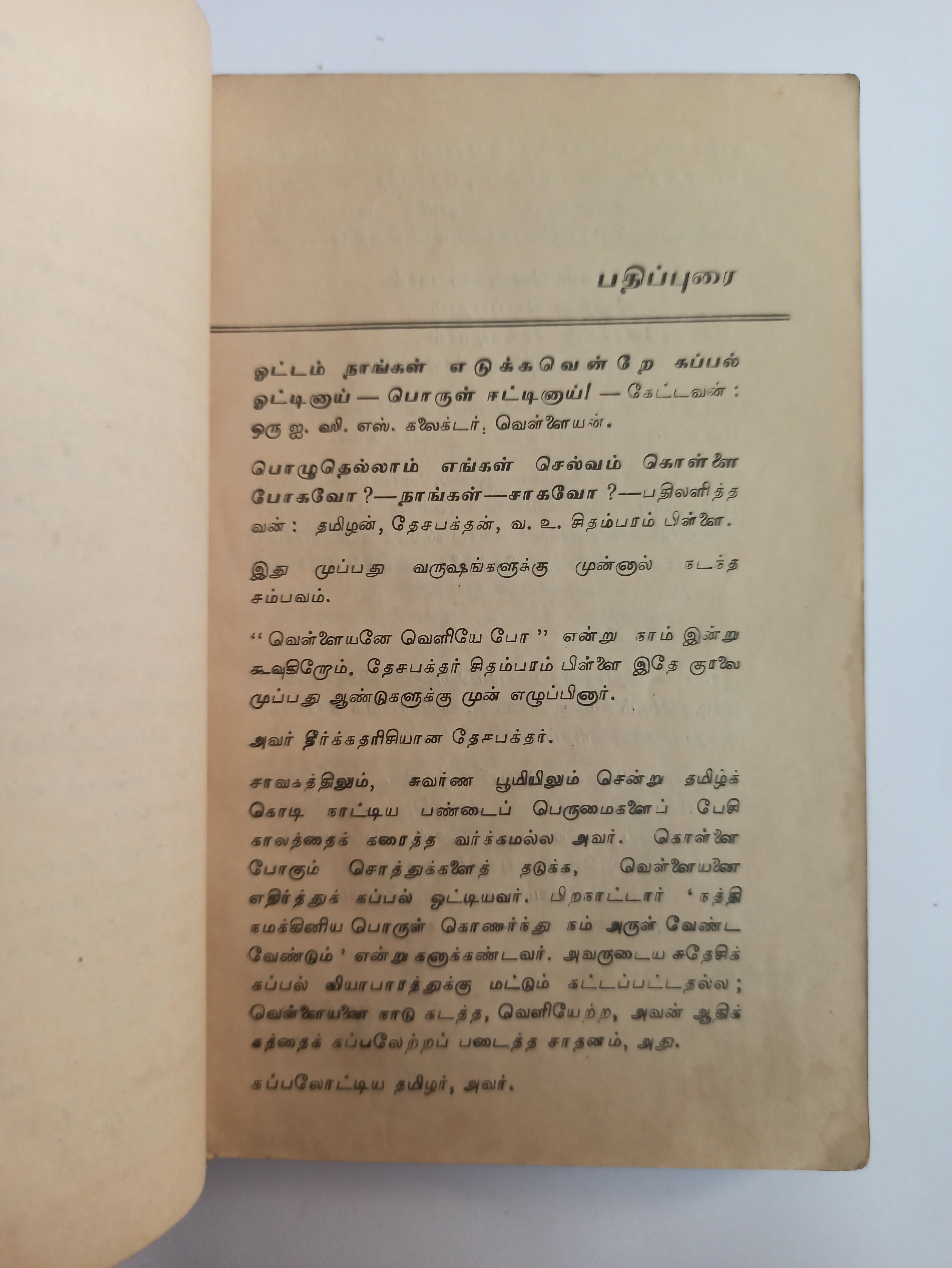
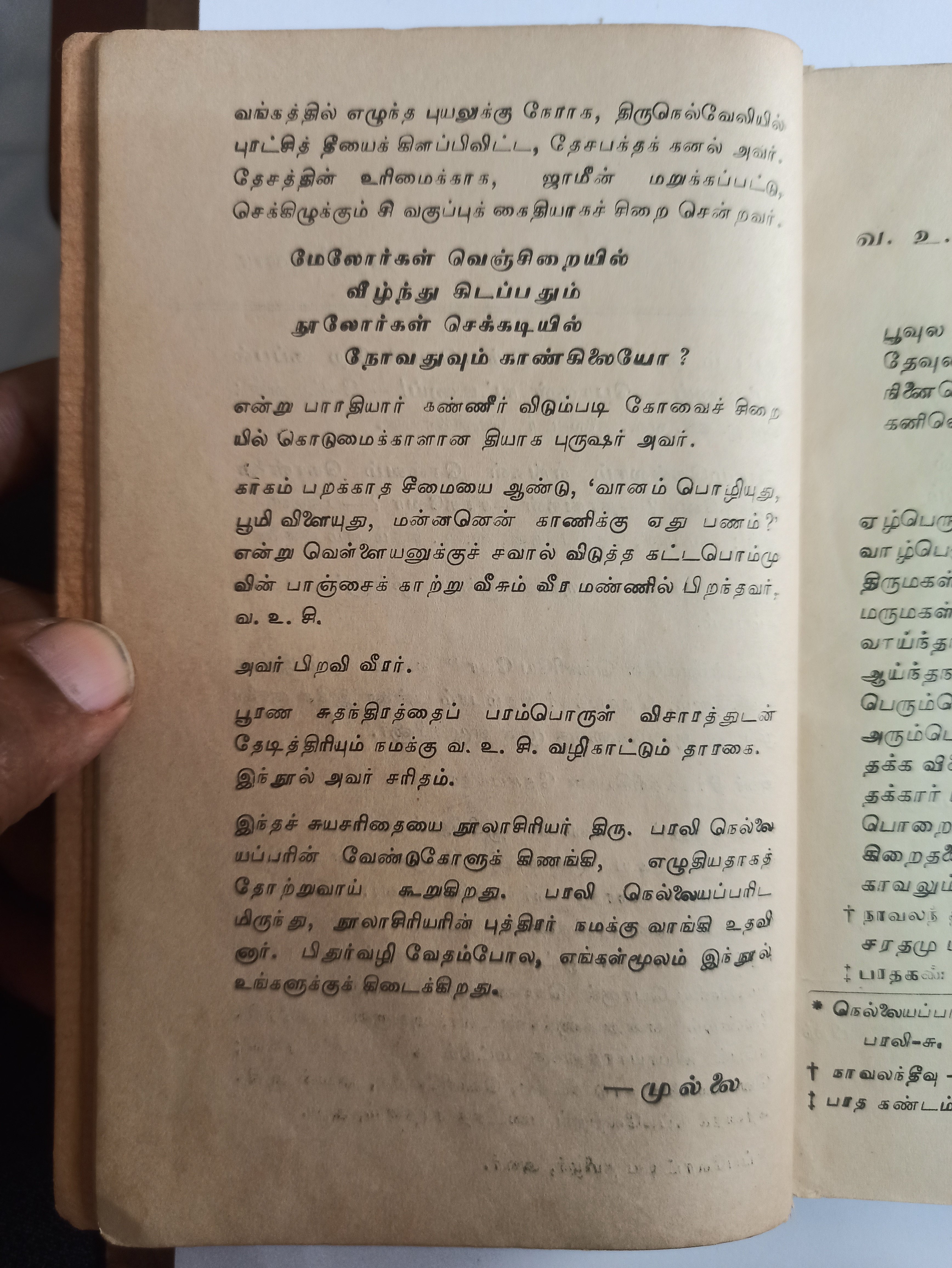
VOC starts his biography with “Nattu Sirappu”…
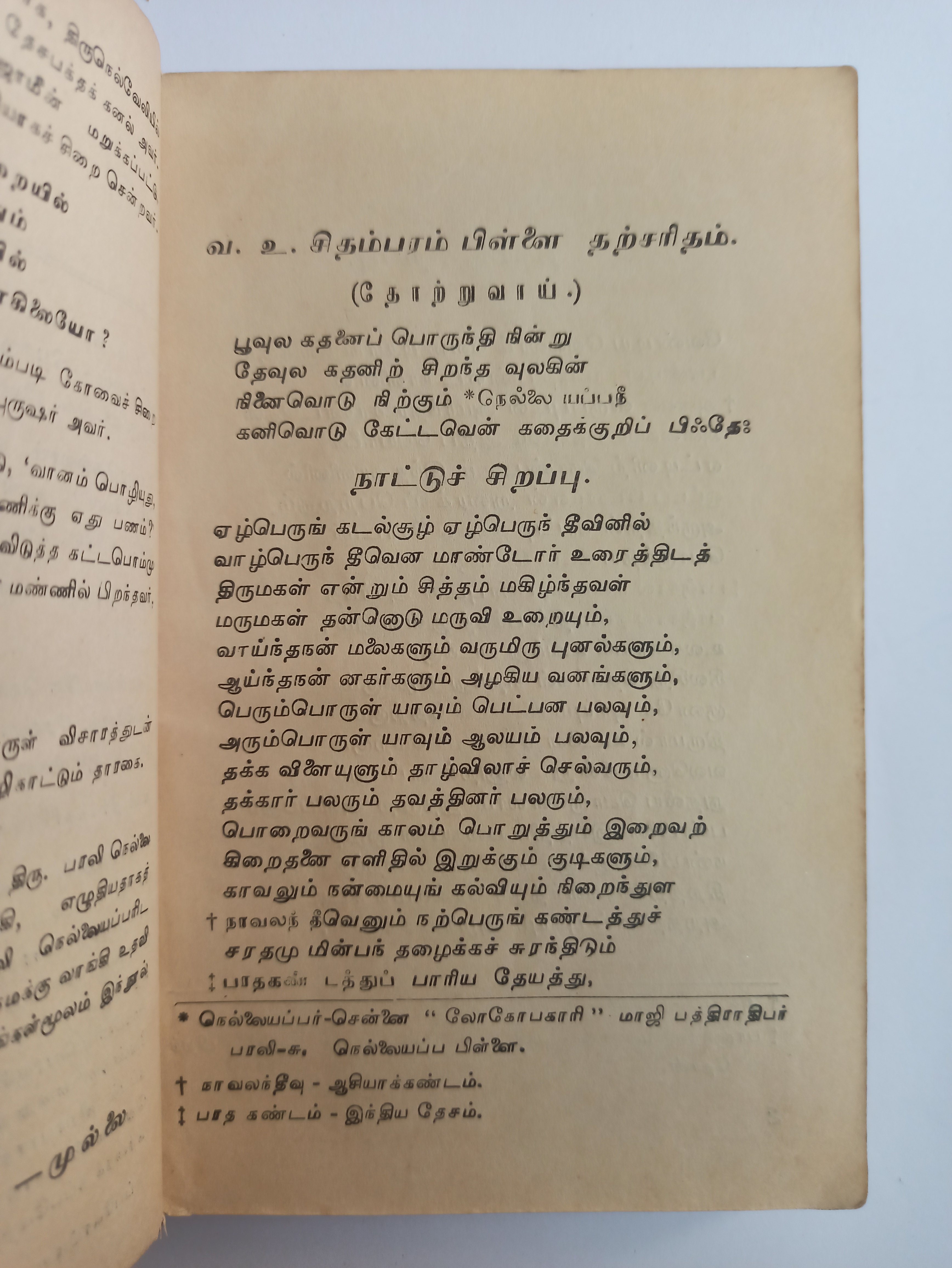
Vande Mataram
DID YOU KNOW:
Vande Maataram (IAST: Vande Mātaram, also pronounced Bande Maataram; বন্দে মাতরম্–Bônde Mātôrôm transl. Mother, I bow to thee) is a poem written in Bengali (with some Sanskrit words as well) by Bankim Chandra Chattopadhyaya in 1870s, which he included in his 1882 Bengali novel Anandamath. The poem was first sung by Rabindranath Tagore in the 1896 session of the Indian National Congress. The first two verses of the song were adopted as the National Song of India in October 1937 by the Congress Working Committee prior to the end of colonial rule in August 1947.
விடுதலை! விடுதலை!! விடுதலை!!!
VOC entered politics in 1905 – following the partition of Bengal. Towards the end of 1905, VOC visited Madras and was drawn closer to the Swadeshi Movement initiated by Bal Gangadhar Tilak and Lala Lajpat Rai.
VOC was a prolific writer and he got inspiration from Tamil and her Classics; VOC was a good friend of Subramania Bharathi. He also drew inspiration from Ramakrishna Mission.
In the first week of March 1908, a series of stirring speeches by VOC, Siva and Padmanabha Iyengar electrified the people of Tuticorin. The nationalist leaders, with strong support from the people of Tuticorin, resolved to take out a mammoth procession on the morning of 9thMarch 1908 to celebrate the release of B.C. Pal from jail and to hoist the flag of Swaraj. Collector Wynch cautioned the Madras Government that the Swadeshis had gained too much prominence and propose to have another meeting on Monday which must be stopped’.
On 12 March, VOC, Siva and Padmanabha Iyengar were remanded to the district jail. Infuriated by the detention of their leaders through overt manipulation of the law, the people of Tirunelveli exploded and the district became engulfed in riots.
At the Sessions Court Judge Pinhey sentenced Siva to ten years’ transportation, while VOC received the maximum punishment of transportation for life. In the Sessions Case No. 2, involving VOC alone on charges of substantive ‘sedition’ offences, a second sentence of transportation for life was passed, to run concurrently with the first one. However, appeal to the Madras High Court brought some reduction in the sentences. VOC’s concurrent sentence of transportation for life was reduced to six years transportation and four years transportation, to run concurrently. VOC and Siva completed their prison sentences under Rigorous Imprisonment.
VOC, who was soon transferred from Palayamkottai Jail to Coimbatore Central Prison, suffered much at the hands of his jailors, in particular a warder nicknamed ‘konaiyan’ (‘the curved one’). Konaiyan first assigned VOC to a jute-cleaning machine which had to be operated with one’s bare hands; the skin of both palms soon peeled off and VOC’s hands started bleeding. When he brought this fact to the attention of the jailor, the latter ‘was kind enough to substitute V.O. Chidambaram for an ox to operate on the oil press in the hot sun’. The eminent lawyer and nationalist leader now found himself forced ‘to draw an oil press like a brute, with fetters on his hands and legs’. However, Madras High Court reduced his sentence and he was finally released on December 24th, 1912.
Upon Chidambaram’s release he was not permitted to return to Tirunelveli district. With his law license stripped from him, he moved to Chennai with his wife and two young sons. There he ran a provisions store and a kerosene store.
Later, Chidambaram moved to Coimbatore and worked as a bank manager. Dissatisfied with the income, he petitioned the court, seeking permission to practice law again. Judge E.H. Wallace gave permission to restore Chidambaram’s pleadership license; to show his gratitude Chidambaram named his last son Valacewaran.
Poverty did not deter VOC from pursuing nationalist cause; his love for the country outweighed his own penury. The correspondence between Gandhiji and VOC during the years 1915-16’ stand testimony to the unflinching patriotism exhibited by VOC.
V.O.C. spent his last years (1930s) in Kovilpatti heavily in debt, even selling all of his law books for daily survival. He died on the 18 November 1936 in the Indian National Congress Office at Tuticorin as was his last wish.
If not for the sacrifices by these great men, India wouldn’t have got freedom as it did in 1947…..
Ex-Library:
Free eBook: https://archive.org/details/dli.jZY9lup2kZl6TuXGlZQdjZtdkZUy.TVA_BOK_0000412/mode/2up

Leave a comment